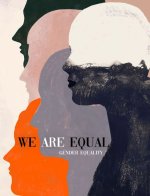The media’s portrayal of LGBTQ issues in India plays a pivotal role in shaping public perception, political discourse, and policy making. While legal victories like the decriminalization of Section 377 have made headlines, the broader representation and discussion of LGBTQ rights in Indian media remain complex and often controversial. The media acts as both a platform for advocacy and a battleground where social attitudes are contested, impacting the politics surrounding sexual minorities.
Historically, mainstream Indian media has largely marginalized or misrepresented LGBTQ individuals. Stereotypes, sensationalism, and invisibility were common, reflecting societal prejudices and political reluctance. Films, television shows, and news outlets often reduced queer identities to caricatures, reinforcing stigma rather than fostering understanding. This limited visibility contributed to the persistence of social taboos and political silence around LGBTQ issues.
In recent years, however, a noticeable shift has occurred. Digital platforms, independent media, and progressive journalism have amplified queer voices and narratives, challenging traditional portrayals. Documentaries, web series, and social media campaigns have humanized LGBTQ experiences, highlighting struggles, successes, and the need for equal rights. This media evolution has influenced political debates, encouraging policymakers to engage more openly with LGBTQ concerns.
Nevertheless, this progress is uneven and contested. Conservative media outlets and commentators often frame LGBTQ rights as a Western import or a threat to Indian culture, fueling political resistance. Such narratives complicate legislative efforts and can incite backlash against activists and community members. The polarized media landscape mirrors the broader political polarization around LGBTQ rights, underscoring media’s role in both advancing and obstructing social change.
Moreover, media coverage influences public opinion, which in turn affects political will. Positive and accurate representation can increase acceptance and support for LGBTQ-friendly policies, while negative portrayals can reinforce prejudice and exclusion. The interplay between media, public sentiment, and political action highlights the importance of responsible journalism and inclusive storytelling.
In conclusion, the media’s role in LGBTQ politics in India is both powerful and paradoxical. It has the capacity to educate, mobilize, and humanize, yet it can also perpetuate divisions and misinformation. For India to advance truly inclusive politics, media platforms must continue to evolve, embracing diversity and fostering informed, empathetic discourse on LGBTQ rights and realities.
Historically, mainstream Indian media has largely marginalized or misrepresented LGBTQ individuals. Stereotypes, sensationalism, and invisibility were common, reflecting societal prejudices and political reluctance. Films, television shows, and news outlets often reduced queer identities to caricatures, reinforcing stigma rather than fostering understanding. This limited visibility contributed to the persistence of social taboos and political silence around LGBTQ issues.
In recent years, however, a noticeable shift has occurred. Digital platforms, independent media, and progressive journalism have amplified queer voices and narratives, challenging traditional portrayals. Documentaries, web series, and social media campaigns have humanized LGBTQ experiences, highlighting struggles, successes, and the need for equal rights. This media evolution has influenced political debates, encouraging policymakers to engage more openly with LGBTQ concerns.
Nevertheless, this progress is uneven and contested. Conservative media outlets and commentators often frame LGBTQ rights as a Western import or a threat to Indian culture, fueling political resistance. Such narratives complicate legislative efforts and can incite backlash against activists and community members. The polarized media landscape mirrors the broader political polarization around LGBTQ rights, underscoring media’s role in both advancing and obstructing social change.
Moreover, media coverage influences public opinion, which in turn affects political will. Positive and accurate representation can increase acceptance and support for LGBTQ-friendly policies, while negative portrayals can reinforce prejudice and exclusion. The interplay between media, public sentiment, and political action highlights the importance of responsible journalism and inclusive storytelling.
In conclusion, the media’s role in LGBTQ politics in India is both powerful and paradoxical. It has the capacity to educate, mobilize, and humanize, yet it can also perpetuate divisions and misinformation. For India to advance truly inclusive politics, media platforms must continue to evolve, embracing diversity and fostering informed, empathetic discourse on LGBTQ rights and realities.

